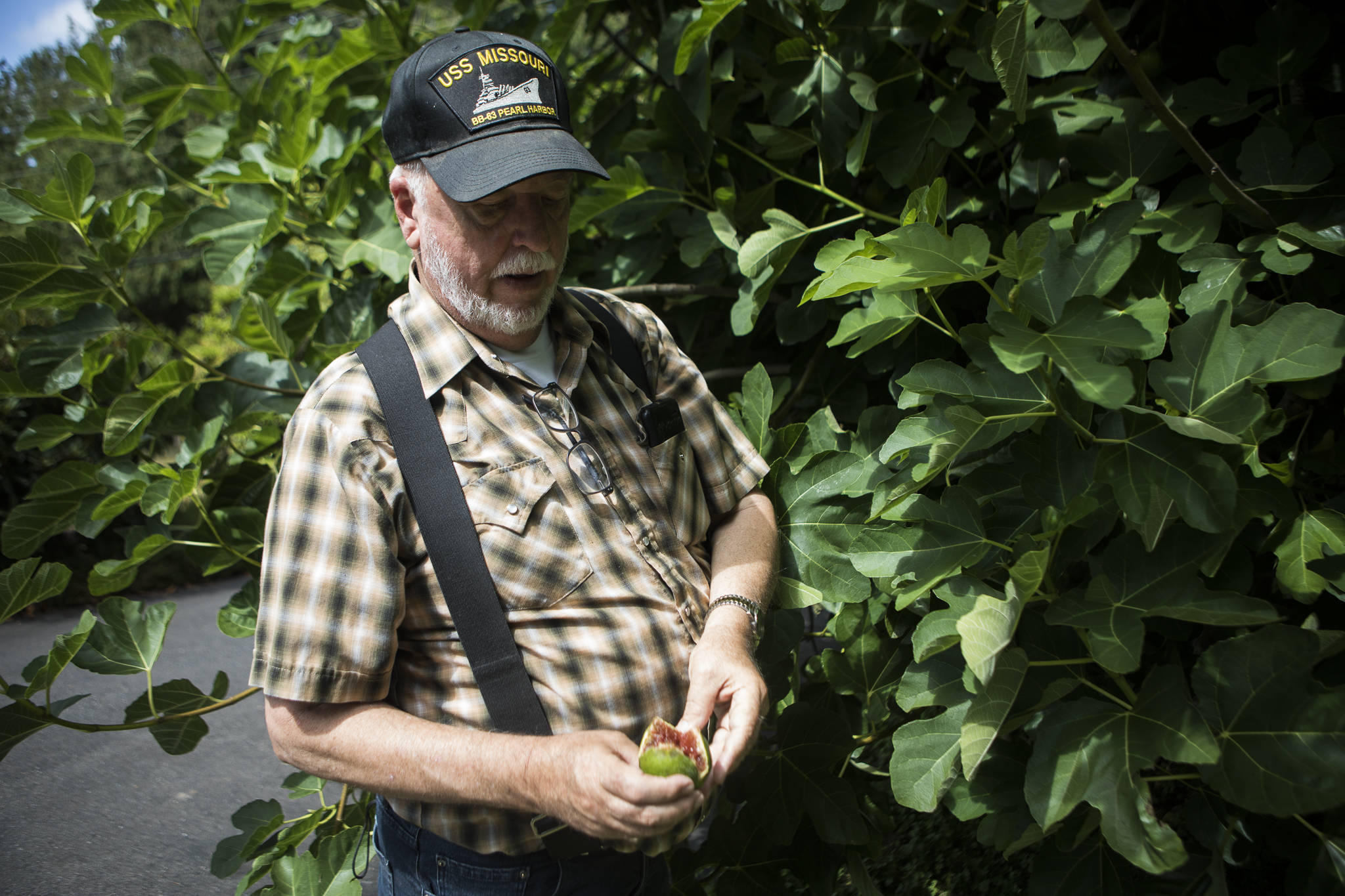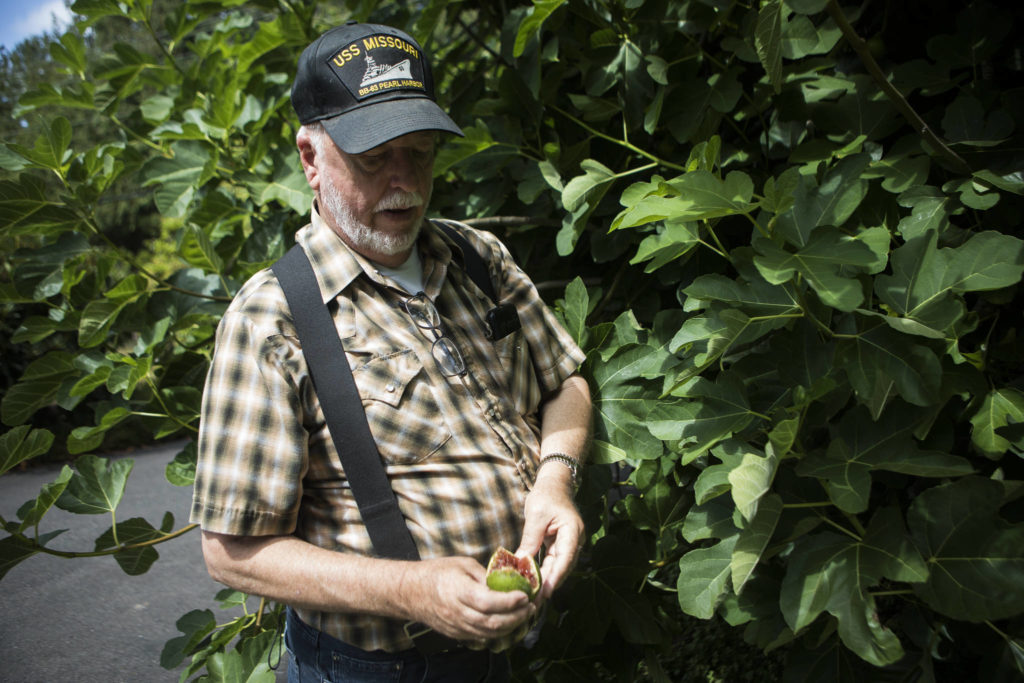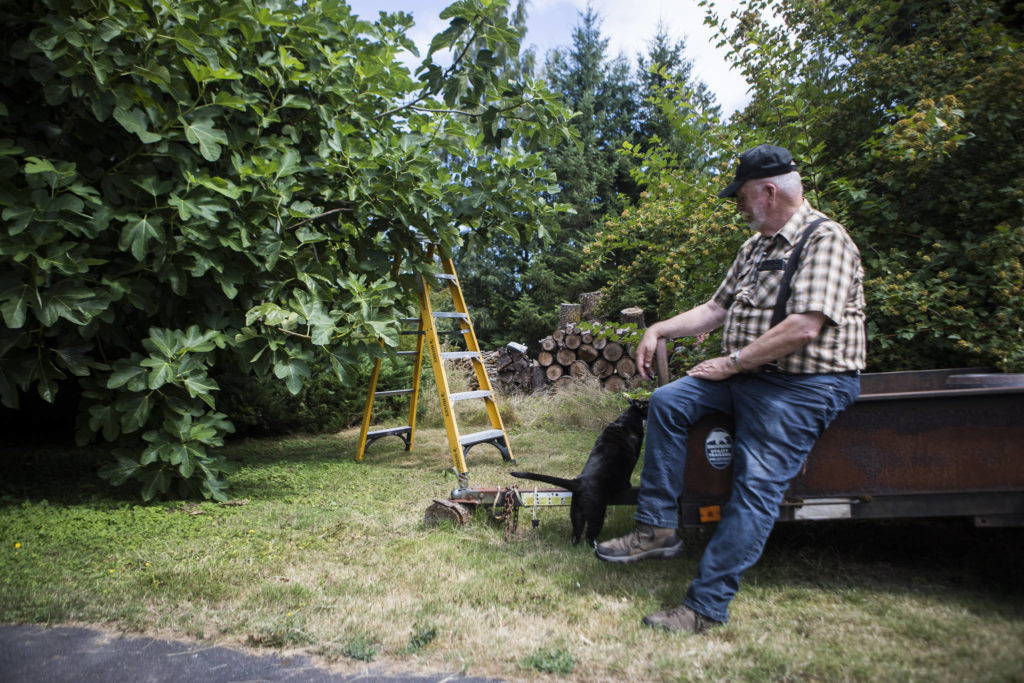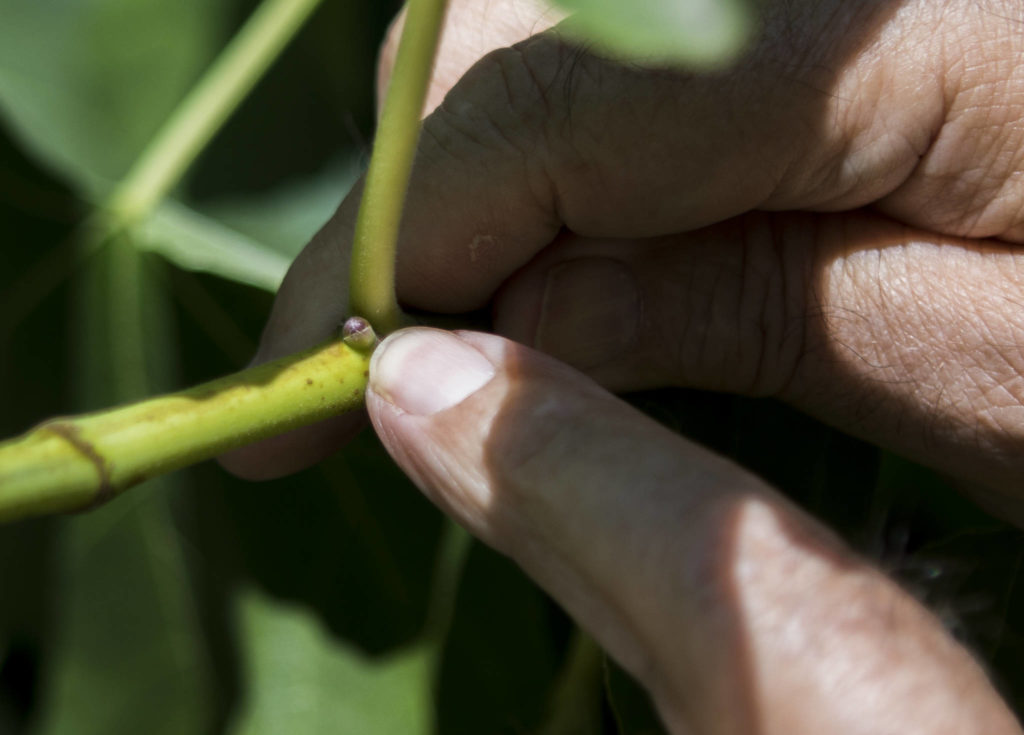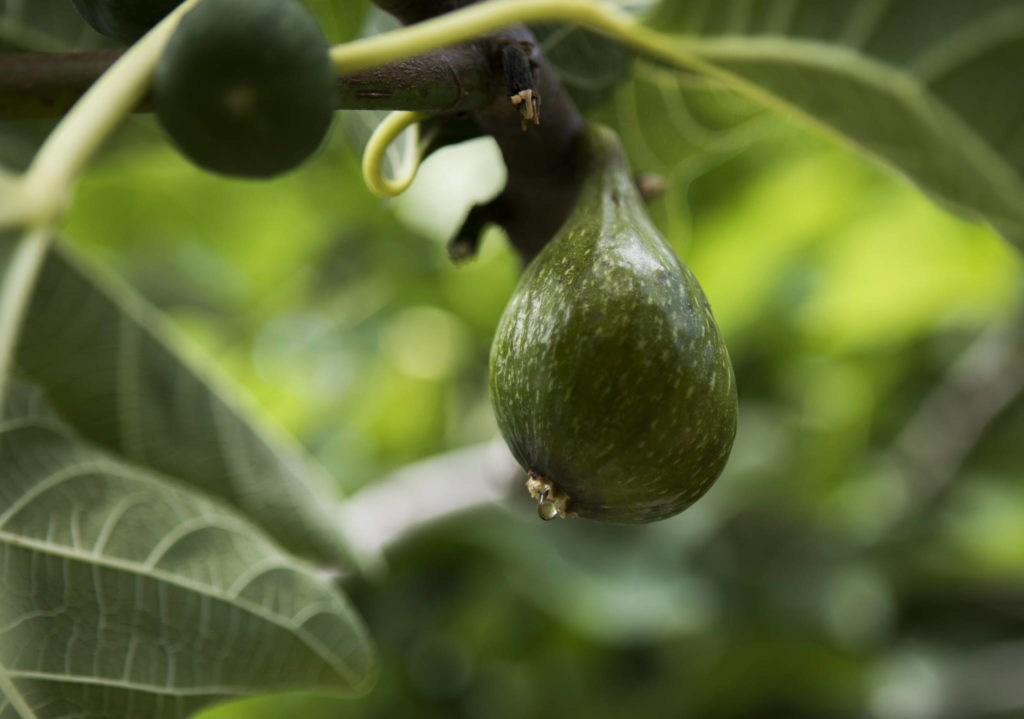Daily Herald reader Wally Harper sent an email with an offer that was figging amazing.
What’s up with that?
“Do you like figs?” Harper’s message began. “I have a tree full that I am trying to give away. Every year same problem. Stop over to get a bag full.”
It ended on this urgent note: “Sooner rather than later. They are fully ripening now.”
I drove by his Mukilteo house, looking for a fig tree.
Sure, the leaves are famous in art and religion — but who knows what a fig tree actually looks like?
I wasn’t even sure what a fig looked like that wasn’t in a Newton, that mealy excuse for a cookie.
The fig tree is native to the Mediterranean and western Asia. It is less common in the Pacific Northwest, the land of apples, cherries and pears.
Harper, 76, a retired Boeing worker, planted a fig tree about 25 years ago at his home on a half-acre.
“It just sounded interesting,” he said. “I didn’t know anything about the subject. Happened across it in a garden section. It was about two feet tall.”
It’s now about 20 feet in height and width.
Harper thought it would be a Fig Newton tree.
It wasn’t.
“These are not those kind of figs, it turns out,” he said. “There’s a bunch of different ones.”
His tree is an Ischia fig that begets green-skinned blobs. Inside the blobs is a dark red burst of sticky deliciousness.
The edible part is really the flower, not the fruit. That’s one of the cool things about figs. There are more.
Fig leaves are used in tea, food wraps and cover-ups.
The leaves were depicted in old paintings and sculptures to conceal the private parts of nude figures. The Bible talks about Adam and Eve clad with fig leaves.
Figs are mentioned in the Koran. Buddha attained enlightenment while sitting under a fig tree.
Harper, a plaid-shirt-and-jeans guy, finds joy in the fresh green blobs that hide amid the leaves. Most require a ladder to reach.
He tries to get the figs before they fall and splatter on the ground.
“It’s highly perishable,” he said. That’s why most commercial production is in dried and processed forms.
He canned about 12 pints for sauces and toppings for cakes.
“The lady down the street just brought me a plate of fig tarts from this tree and they are excellent,” he said.
His wife, Dianna, is among those on the fig cleanup crew.
“The deer come through and enjoy what they want of them,” she said. “They are a good help.”
He also has plums, apples, berries and bee hives in his garden of plenty, which he strives to share.
“People think if you’re giving it away there must be something wrong with it,” he said.
Some towns have message boards where people post their abundance, to share or swap their fruit burden.
Contact your local food bank to ask about donation guidelines. The Mukilteo Food Bank accepts produce from people’s yards, preferably on or just before client serving days.
Figs have an added nutritional bonus.
This headline from littlethings.com says it all: “Scientists Say That Every Single Fig You Eat Contains At Least One Dead Wasp.”
The fig gives the wasp a safe place to reproduce, while the wasp returns the favor by helping to pollinate.
The story explains: “The female wasp lays her eggs in a male fig, and dies once they’re laid. The male larvae hatch and start tunneling out, but get distracted when the female larvae hatch, and abandon their project in favor of mating with the females, and passing away shortly after. The females then continue their way out, and find male figs, where they lay their eggs, and start the whole cycle all over again.”
It goes on to say that fig cookies might also contain wasp parts.
The rectangles of mush popularized in the U.S. by Nabisco as Newtons were promoted by the Brits as a digestion aid and, to some people, still taste like it.
It’s no Oreo. Man, if only those grew on trees.
Andrea Brown: abrown@heraldnet.co m; 425-339-3443. Twitter @reporterbrown.
Talk to us
> Give us your news tips.
> Send us a letter to the editor.
> More Herald contact information.
